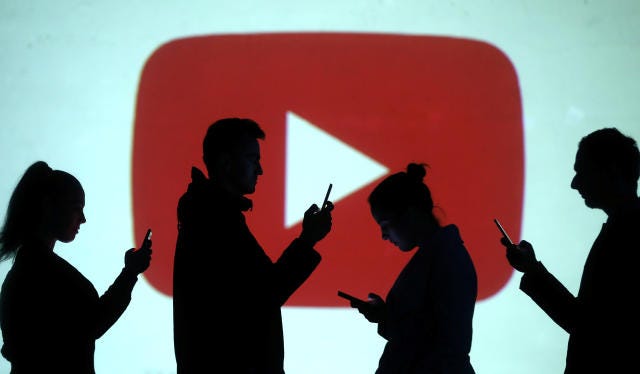17th September 2024
YouTube’s viewing numbers have been dominating both streamers and traditional broadcast models. We looked into this phenomenon and what it might mean for the future of broadcasting.

Streaming numbers or viewers of online content have been climbing steadily since 2020. In 2022 viewer numbers for online content overtook both free-to-air TV & cable statistics for the first time in America. In Australia subscription video-on-demand (SVOD) platforms overtook free-to-air television in viewer numbers for the first time on record in 2021, and they overtook both free to air and cable/ Foxtel stats earlier this year.
Children and young adults in particular are predominantly watching streaming models rather than traditional broadcast models. The over 55 year old age group is the only one that still shows a preference for free-to-air TV and cable. The main reason people gave for preferring streaming over traditional TV is that they can watch what they want, when they want.
What is Australia’s preferred destination for online video? YouTube.
According to this article, 70% of Australians prefer to watch online content on YouTube. 2 in 3 people agree they find content on YouTube they can’t find anywhere else and 68% of people agree YouTube has high quality video content.
Globally, YouTube gets 150 million views a month.

What advantages does YouTube have over traditional broadcasting models?
YouTube doesn’t pay anything for its content. Instead, they rely on a large network of creators to do so.
In contrast to traditional television, YouTube offers instant audience feedback and real-time adjustments, creating a dynamic and interactive experience. It is challenging for broadcasters to compete with YouTube’s extensive creative talent and its capacity to engage a wide range of viewers.
Many top YouTube broadcasters are creating highly professional, quality content, recognising they are competing with top streamers – and maybe they’re winning?
We were fascinated by this article which unpacks this conversation. It dissects how broadcasters are missing an opportunity by not embracing the YouTube model of business. Even though viewers are abandoning free-to-air channels for streaming services, broadcasters have largely kept the same traditional TV models and strategies in place.
What about other streaming models?
In April this year, stats showed YouTube delivered 9.7% of TV viewing time in the US, while the top five broadcaster TV apps (Hulu, Disney+, Peacock, Max, and Paramount+) combined drove only 8.3% of viewing time.
Broadcasters who do own similar models to YouTube, like Pluto TV (owned by Paramount Global), Tubi (owned by Fox Corp), and Xumo (owned by NBCU’s parent Comcast) produce little original content, instead operating as a library of television shows. Quality original content is kept behind a subscription paywall or aired on the broadcasters traditional TV channels. Many streaming services have failed to make a profit from their business models, apart from Netflix and more recently, Disney+.
Not too long ago, creating content for ‘online’ was seen as less prestigious and lacking the craft of traditional cinema and TV platforms.
With 150 million views a month, broadcasters need to pivot quickly and continue to think outside the (television) box.
You can keep your finger on the pulse with all things You Tube, TikTok and content creation by following The Publish Press.
This blog originally featured in our newsletter. To read the full newsletter and to subscribe to future issues, click here.



 Prev
Prev